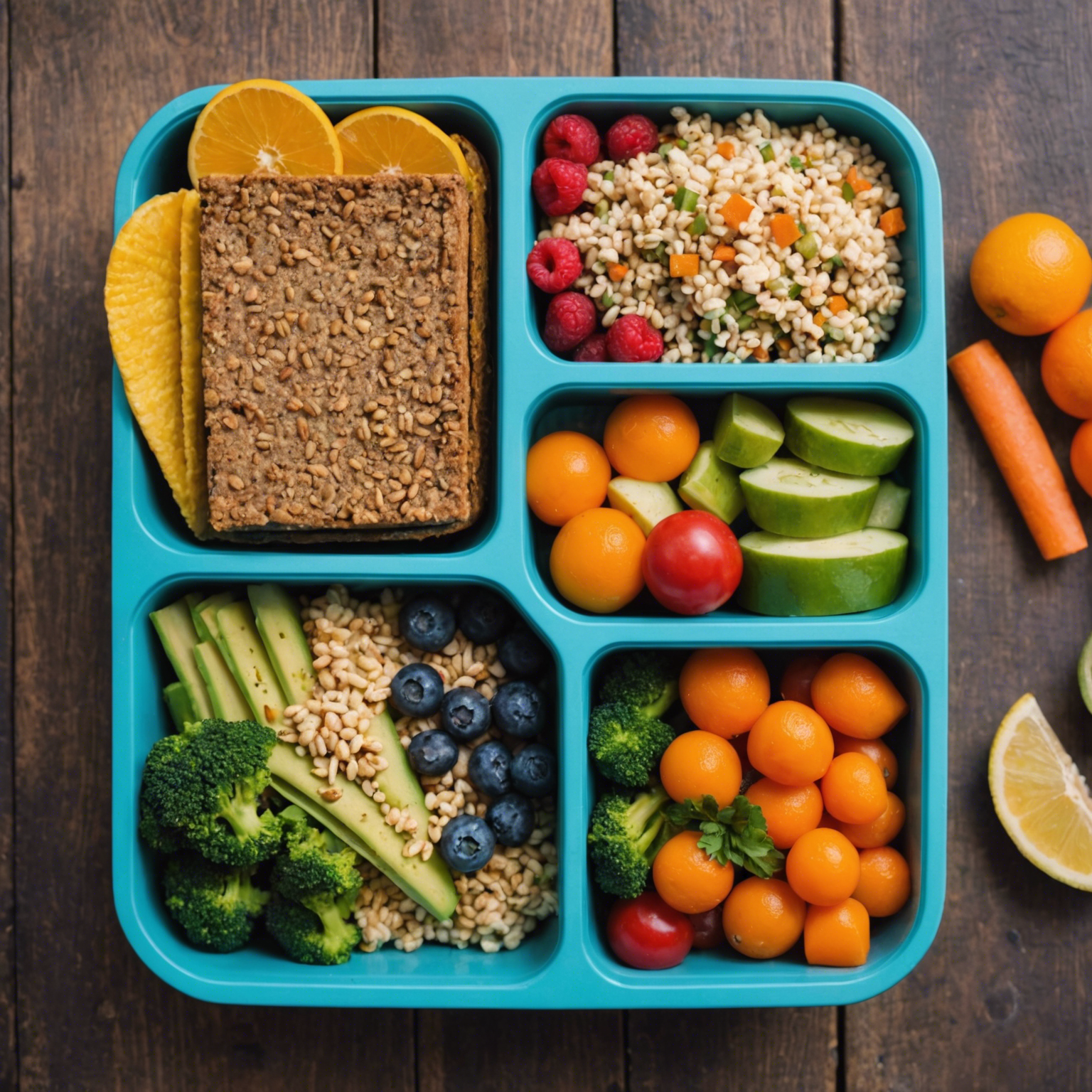Packing a lunchbox for your child is a crucial way to ensure they’re getting the energy and nutrients they need to grow, learn, and play. As a parent, you want to provide them with meals that are not only delicious but also beneficial to their health and development. If you identify as vegan or simply want to incorporate more plant-based meals into your child’s diet, this guide is for you.
Why Vegan Lunchboxes Matter
Beyond the environmental benefits and the compassionate choice to not consume animal products, there are several reasons why a well-planned vegan lunchbox can benefit both you and your child.
- If your child has allergies or intolerances, a vegan diet can be a more inclusive option. Common allergens like milk, eggs, and some types of fish and shellfish are often avoided in vegan diets.
- Starting your child on a path of ethical eating can be an important lesson in empathy and respect for animals. It is never too early to teach them about the benefits of a plant-based lifestyle.
Now that we’ve covered the “why,” let’s dive into the “how” of packing a satisfying and nutritious vegan lunchbox that your child will enjoy.
The Building Blocks of a Vegan Lunchbox
While every child is unique, a well-rounded vegan lunchbox includes the proper balance of macronutrients (protein, carbohydrates, and healthy fats) and micronutrients (vitamins and minerals) from a variety of sources.
Here’s a breakdown of what you should aim for:
- Protein: Aim for about 10 grams of protein per 100 calories of food. Good sources include beans, lentils, tofu, tempeh, nuts, seeds, whole grains, and plant-based milks.
- Carbohydrates: Look for complex carbs that will provide sustained energy. Examples include whole grains (such as brown rice, whole wheat bread, and quinoa), vegetables, legumes, fruit, and starchy tubers (like sweet potatoes).
- Healthy fats: Incorporate unsaturated fats from sources like avocados, nuts, seeds, plant-based oils, and olives. These fats support brain development and help your child feel satiated.
In addition to these macronutrients, it’s important to pack a variety of colorful fruits and vegetables. The more vibrant the colors, the more vitamins and minerals your child will get. Offer a range of textures and flavors to keep things interesting.
Kid-Friendly Vegan Lunchbox Ideas
Now that we’ve covered the basics of what makes a good vegan lunchbox, let’s get into some fun and tasty ideas that your child will love.
Here are some kid-approved vegan lunchbox recipes to try:
Main Dish Ideas
- Hearty sandwiches or wraps filled with hummus, avocado, sprouts, sliced cucumber, tomato, and alfalfa or sunflower shoots. Add a few slices of vegan deli meat, if desired.
- Pasta dishes made with tomato sauce, lentils, chickpeas, or cooked vegetables. Consider adding a plant-based meat alternative for extra protein and texture.
- Rice bowls with cooked brown rice, black beans, corn, salsa, shredded lettuce, avocado, and a sprinkle of hemp seeds.
- Savory baked goods like vegan corn muffins, zucchini bread, or homemade vegan pizza.
For snacks and side dishes, consider:
- Crunchy veggie sticks (carrots, bell pepper, zucchini, and cucumber) served with hummus, salsa, or a plant-based yogurt dip
- Homemade granola bars or energy bites made with rolled oats, nuts, seeds, dried fruit, and a little sweetener (honey, maple syrup, or agave nectar)
- Refreshing fruit skewers with a choice of seasonal fruit, a drizzle of chocolate sauce, and a handful of nuts for dipping
Expert Tips for Packing a Vegan Lunchbox
To make the process of packing a vegan lunchbox smooth and efficient, consider the following tips:
- Batch cook and freeze meals on the weekends so you have options throughout the week. This can save you time and energy during the busy school or work week.
- Use reusable containers to pack your child’s lunch. This can help reduce waste and make mealtime more convenient. Consider using bento boxes, divided containers, or reusable ziploc bags.
To keep lunchboxes fresh and safe, consider using an insulated bag with an ice pack. This can help keep perishable items like yogurt or hummus cool during transport.
When packing your child’s lunchbox, be sure to wash all fruits and vegetables thoroughly to avoid cross-contamination. You can also consider using separate cutting boards or knives for different items to ensure no allergens are accidentally introduced.
Tackling Picky Eaters
Getting your child to try new foods can be a challenge, but with a little creativity and patience, you can make mealtime a fun and enjoyable experience.
Here are some strategies for introducing new foods to your child:
- Introduce new foods gradually, especially if your child is a picky eater. Start by offering the new food alongside or mixed with a familiar flavor they enjoy. Over time, they may become more open to trying it on its own.
- Encourage your child to be involved in meal planning and food selection. Let them help pick out fruits and vegetables at the grocery store or choose a new recipe to try together.
When packing a lunchbox, try to make the food fun and interactive. Consider using colorful and creative presentations like smiley faces made with food or animal-shaped cutters. You can also involve your child in the packing process by letting them help choose what goes in their lunchbox.
Remember, it’s normal for kids to be picky eaters at times. Be patient and consistent with offering new foods, and don’t force them to eat something if they don’t want to. Over time, they may surprise you with their willingness to try new things.
